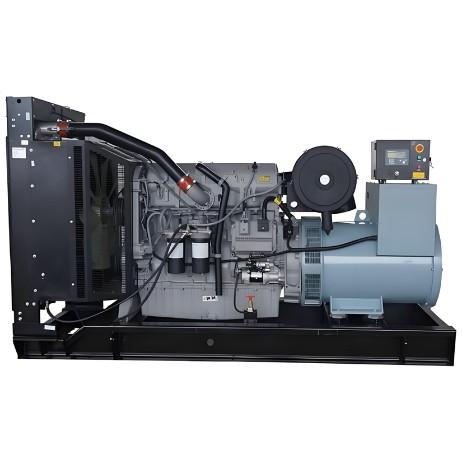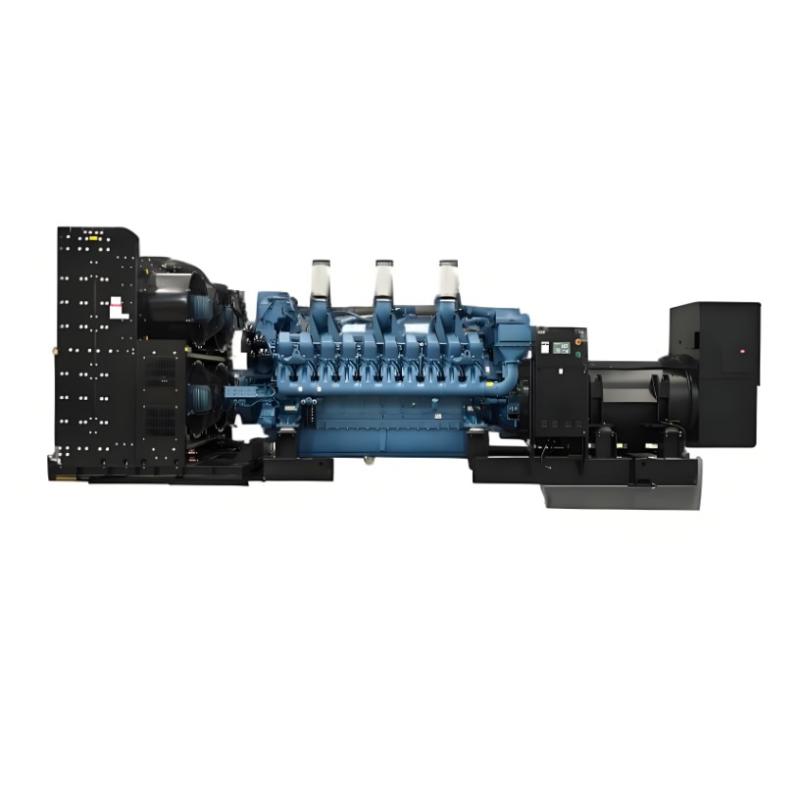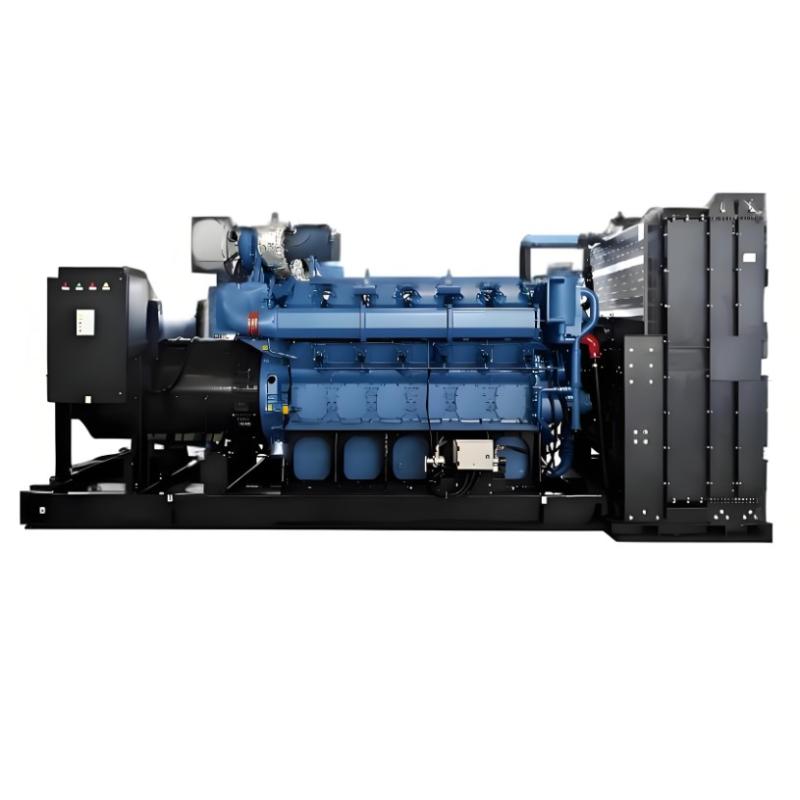Generatzaile Arazo Arruntak eta Babes Sistemeak
Generatzaile Arazoen Klasifikazioa
Generatzaile arazoak nagusiki barne eta kanpo motatakoak dira:
Motor lehentasuneko (adibidez, gasoil motorrak, turbinak) arazoak mekanikoak dira eta zailtasun horiek gailu diseinuan zehazten dira, baina generatzaile babesei lotu behar zaizkio tripatzeko helbururako.
Barne Arazo Mota
1. Stator Arazoak
Biraka Overheating: Dauka den geratzearen edo isolamenduaren hondamenagatik sortzen da.
Fase arteko Arazoa: Faseen arteko isolamenduaren hondamenagatik gertatzen da.
Fasea-Lurreta Arteko Arazoa: Biraketa faseetatik stator karkasa handira korronte iluntzea.
Inter-Turn Arazoa: Biraketa berdinetan kokatuta dauden biraketa arteko korronte txikitzailea.
2. Rotor Arazoak
Lurreta Arteko Arazoa: Rotor biraketatik rotor trinkara korronte iluntzea.
Biraketa Korronte Txikitzailea: Exitzazio tenperatura murriztua eta korrontea handitzen da rotor biraketan.
Overheating: Stator unbalanced korronteenagatik (adibidez, polts bat tripatzea, negatibo fase sekuentzia).
3. Exitzazio Galtzea/Exitzazioa
4. Sinkronismoa Galdua
5. Motor Exekutatzeko Modua
6. Mekaniko Arazoak
Rotor Overheatingen Mechanismoa
Stator unbalanced korronteak (adibidez, negatibo fase sekuentzia) bi aldiz sistemaren maiztasunarekin (100/120 Hz) rotorretan eddy korronteak sortzen dituzte, lokalki overheating egiten dutenak. Honek rotorretako mantentze wedges eta erronboak ahuldu egiten ditu.
Kanpo Arazo Mota
Sistema Elektrikoko Anormalitateak
Kanpo Short-Circuits: Sarean gertatzen diren arazoak generatzailearen funtzionamendura eragiten dizkie.
Non-Synchronized Connection: Generatzaile paralelo konektatze inpropia.
Overloads/Overspeed: Karga askatasuna edo motor lehentasuneko kontrolaren hondamenagatik.
Phase Unbalance/Negative Sequence: Rotor eddy korronteak eta overheatinga indutzeko.
Frequency/Voltage Deviations: Under/over frequency edo voltage generatzaile osagaiak estresatzen ditu.
Generatzaile Babes Gailuak
Nagusien Babes Planteak
1. Stator Arazo Babesa
Differential Relay: Phase-to-phase eta phase-to-earth arazoak detektatzen ditu sarrera/irteera korronteen konparatzearen bidez.
Earth Fault Protection: Overcurrent relays (rezistentzia lurreta) edo voltage relays (transformer grounding) erabiliz stator ground arazoak detektatzen ditu.
2. Rotor Arazo Babesa
3. Unbalanced Loading Protection
4. Overheating Protection
5. Mekaniko Babesa
6. Backup and Supplementary Protection
Reverse power relays motor modua saihestu, stator earth arazoetarako differential relays primary arazo detektatzeko (Ikusi Figure 1 usual connections).
Differential Relays: Compare currents at both ends of stator windings to detect internal faults.
Protection Principles
Zero-Sequence Voltage Detection: Identifies inter-turn faults by monitoring voltage imbalances via voltage transformers (VT).
Grounding System Adaptation: Protection schemes vary based on stator grounding methods (resistance or transformer grounding), using CTs or VTs to sense fault currents/voltages.

Rotor Winding Fault Protection Mechanisms
Wound rotor winding short-circuit faults are safeguarded by overcurrent relays, which trip the generator upon detecting abnormal current surges. Earth faults pose another risk to rotor windings, though their protection requires specialized approaches.
In large thermal generators, rotor or field windings are typically ungrounded, meaning a single ground fault does not produce a fault current. However, such a fault elevates the potential of the entire field and exciter system. Extra voltages induced by opening the field or main generator breaker—especially during fault conditions—can stress the field winding insulation, potentially causing a second ground fault. A second fault may lead to localized iron heating, rotor distortion, and dangerous mechanical unbalance.
Rotor earth-fault protection often employs a relay that monitors insulation by applying an auxiliary AC voltage to the rotor. Alternatively, a voltage relay is used in series with a high-resistance network (commonly a combination of linear and non-linear resistors) across the rotor circuit. The center point of this network connects to ground via a sensitive relay coil (ANSI/IEEE/IEC code 64). Modern protection schemes increasingly favor combinations of linear and non-linear resistors for improved fault detection and insulation monitoring.
Loss of Field and Overexcitation Protection Mechanisms
Loss of field protection employs a relay to detect changes in reactive power flow. A typical scheme uses an Offset Mho (impedance) relay— a single-phase device supplied by generator current transformers (CTs) and voltage transformers (VTs)—to measure load impedance. The relay triggers when the impedance falls within its operating characteristic. A timing relay initiates generator tripping if leading reactive power persists for 1 second (standard timing).
Overexcitation Protection
To prevent core saturation during startup and shutdown, overexcitation protection (ANSI/IEEE/IEC code 59) is implemented, based on the relationship:B = V/f
where:
B = magnetic flux density (tesla, T)
V = applied voltage (volts, V)
f = frequency (hertz, Hz)
Core flux must stay below the saturation point, meaning voltage can only increase proportionally with frequency (speed). Rapid excitation increases risk overexcitation, detected by Volts per Hertz relays. These relays feature linear characteristics and trip when V/f exceeds set thresholds.
Stator and Rotor Overheating Protection
Stator Windings & Bearings: Temperature monitoring via resistance temperature detectors (RTDs) and thermistors.
Stator Phase Unbalance: Time-inverse overcurrent relays set to the rotor’s maximum heat tolerance.
Negative Phase Sequence Protection: Shields the machine from rotor overheating caused by unbalanced stator currents, which induce damaging eddy currents in the rotor.
Reliable protection systems are critical to minimize damage and repair time, as generators are among the most expensive power system components.

This protection utilizes a relay that compares currents in two phases via current transformers (CTs), as illustrated in Figure 2. The protective settings are determined by the maximum time the rotor can endure overheating, defined by the equation K = I²t (derived from Joule's law), where I is the negative sequence current and t is the duration.
Manufacturer-specified typical time-current curves for this condition vary based on the prime mover type, as shown in the referenced diagram.

Reverse Power, Out-of-Step, and Frequency/Voltage Protection Systems
Reverse Power Protection (ANSI/IEEE/IEC Code 32)
This protection employs a power directional relay to monitor generator load, supplied by CTs and VTs (see Figure 3). The relay activates upon detecting negative power flow—indicating the generator is drawing power from the grid (motor operation)—and triggers tripping to prevent turbine damage.
Out-of-Step Protection
Designed to detect power system disturbances (not generator faults), this protection identifies pole slipping when the generator loses synchronism. It trips the generator breakers while keeping the turbine running, allowing re-synchronization after the disturbance clears.
Frequency and Voltage Protection
Under/Over Frequency Protection (ANSI/IEEE/IEC Code 81)
Overfrequency: Caused by sudden load shedding, risking overvoltage if not managed. Generator controls must adjust output to match demand.
Underfrequency: Results from insufficient generation for connected loads, leading to voltage drops, increased excitation, and rotor/stator overheating. Load shedding is critical to prevent system collapse.
Under/Over Voltage Relays (Codes 27/59)
Monitor and control voltage deviations to protect equipment from stress or damage.
Phase Supplementary Start Protection
Prevents starting the generator into a fault or loaded condition. Low-set overcurrent relays engage only when frequency is below 52 Hz (for 60 Hz systems) or 42 Hz (for 50 Hz systems), ensuring protection during startup transients.
External Short-Circuit Protection
Overcurrent relays (50, 50N, 51, 51N) detect and clear faults on the external network, safeguarding the generator from excessive fault currents.
These protection schemes collectively address operational anomalies—from power flow reversals to system-wide disturbances—ensuring generator integrity and grid stability.
























